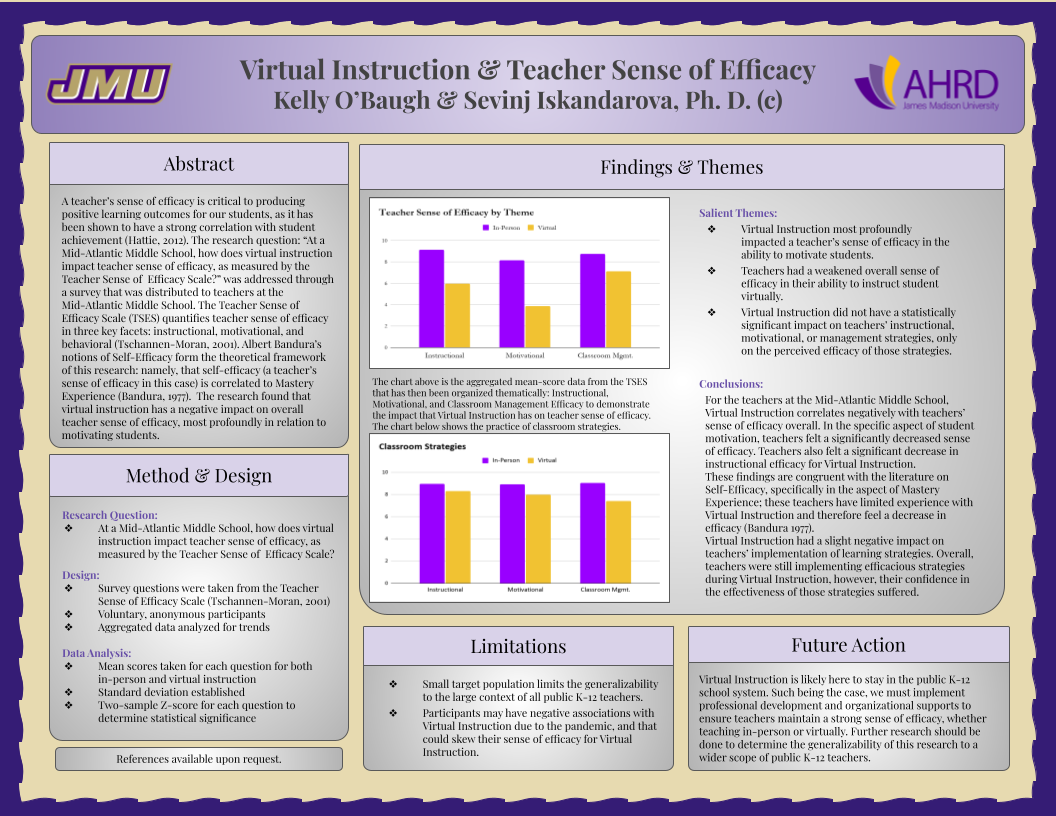Virtual Instruction and Teacher Sense of Efficacy
Adult Education and Human Resource Development
The purpose of this research is to understand the impact that virtual instruction is having on our public school teachers' sense of efficacy. Researchers have found that teacher sense of efficacy is an important factor in lowering teacher attrition and increasing student performance (Hattie, 2012; Swanson, 2010). The Teacher Sense of Efficacy Scale (TSES) was adapted and sent to participants as a survey (Tschannen-Moran, 2001). Participants in this research were faculty members of a Mid-Atlantic Middle School. The data analysis used two mean scores for each TSES question, one for in-person (as a control) and one for virtual instruction (independent variable). The mean scores were ultimately used to determine the statistical significance (Z-score) of the difference in efficacy-belief. Data were thematically organized to understand the specific area of Teacher Efficacy that is most impacted by Virtual Instruction. The findings of this research indicate that K-12, public school teachers from the Mid-Atlantic Middle School feel a significant decrease in efficacy for their ability to motivate students virtually. There was also a negative impact on teachers’ sense of Instructional Efficacy, though it was not as profound as Motivational Efficacy. Furthermore, the data shows that participants still implemented efficacious classroom strategies while instructing virtually; it was only their perception of the effectiveness of those strategies that suffered. The scope of this research was limited to the Mid-Atlantic Middle School’s faculty, so generalizability is limited for the public, K-12 system as a whole. Further research is needed to determine the generalizability of this research. The findings of this research indicate that the faculty of the Mid-Atlantic Middle School would benefit from professional development and organizational support in their virtual instruction to give them a stronger sense of efficacy and to therefore improve learning outcomes for their students.

